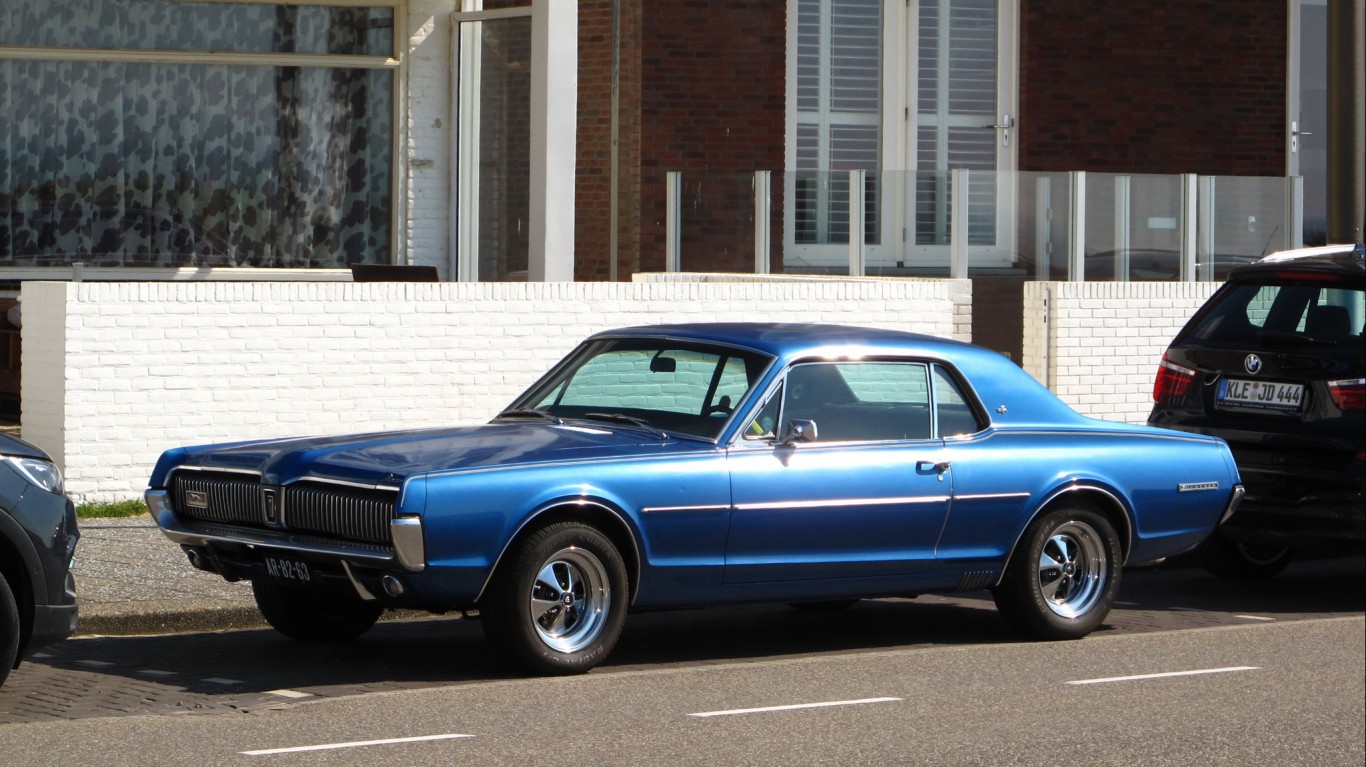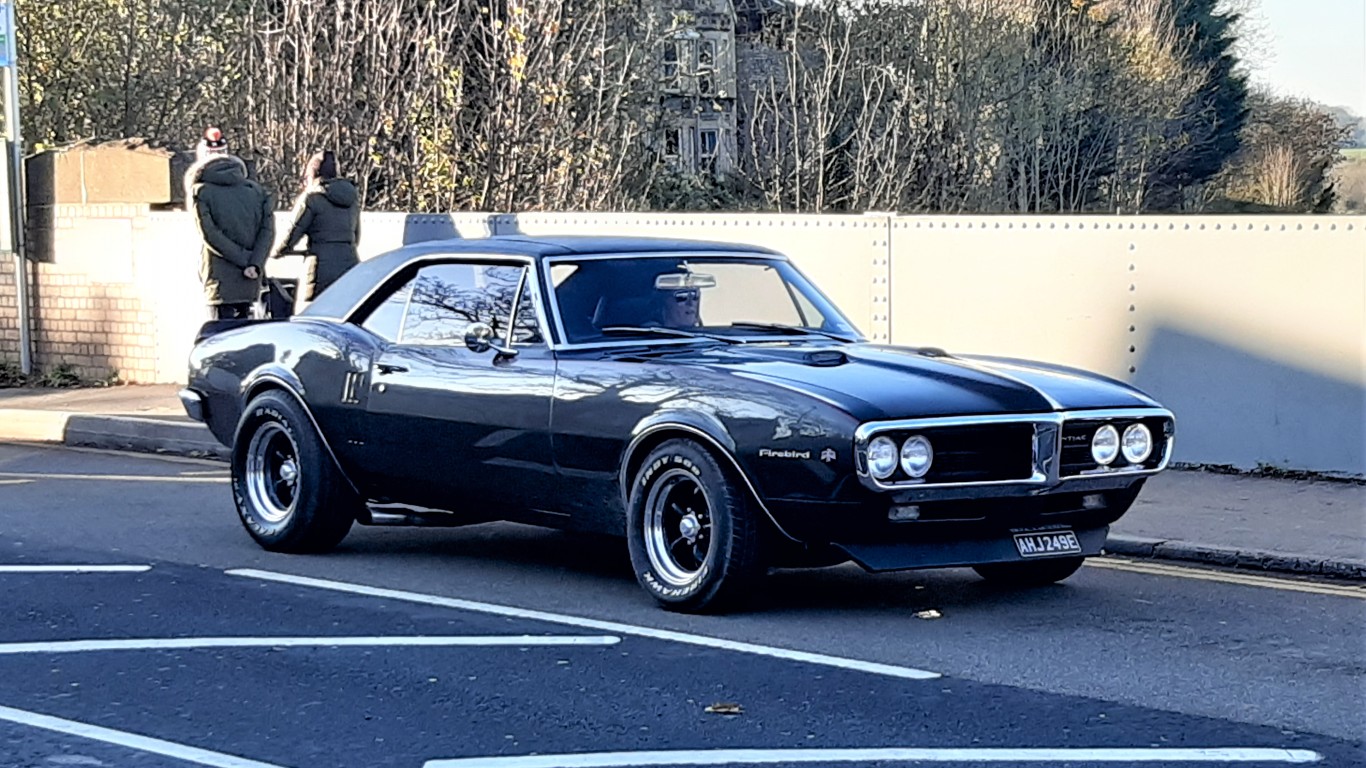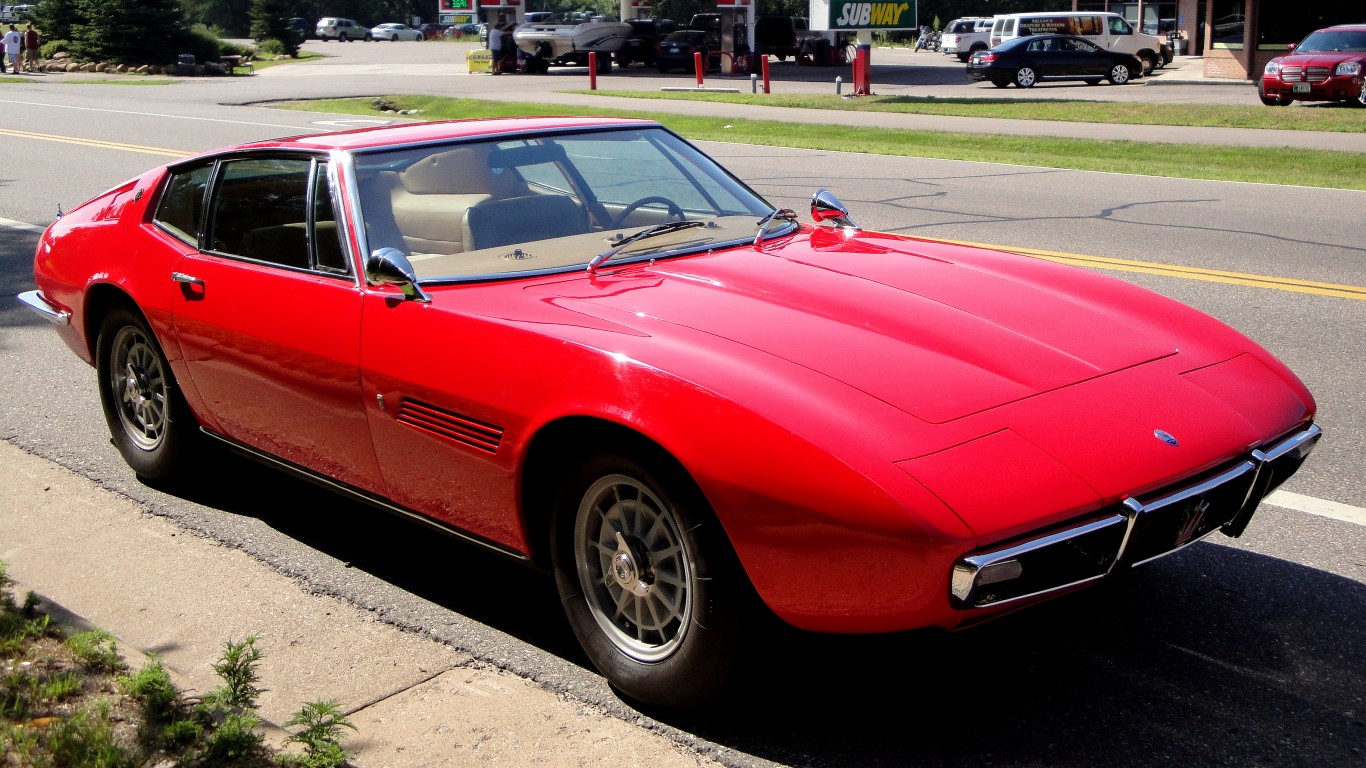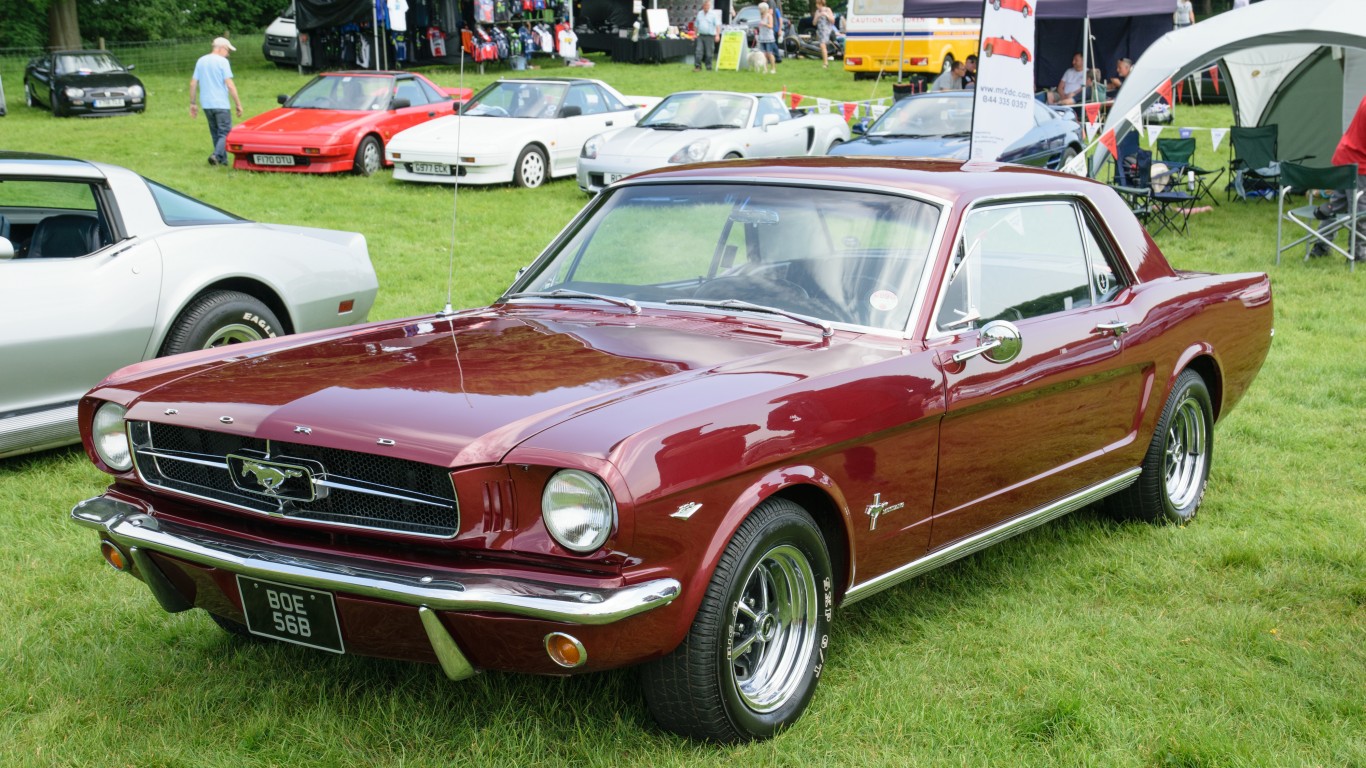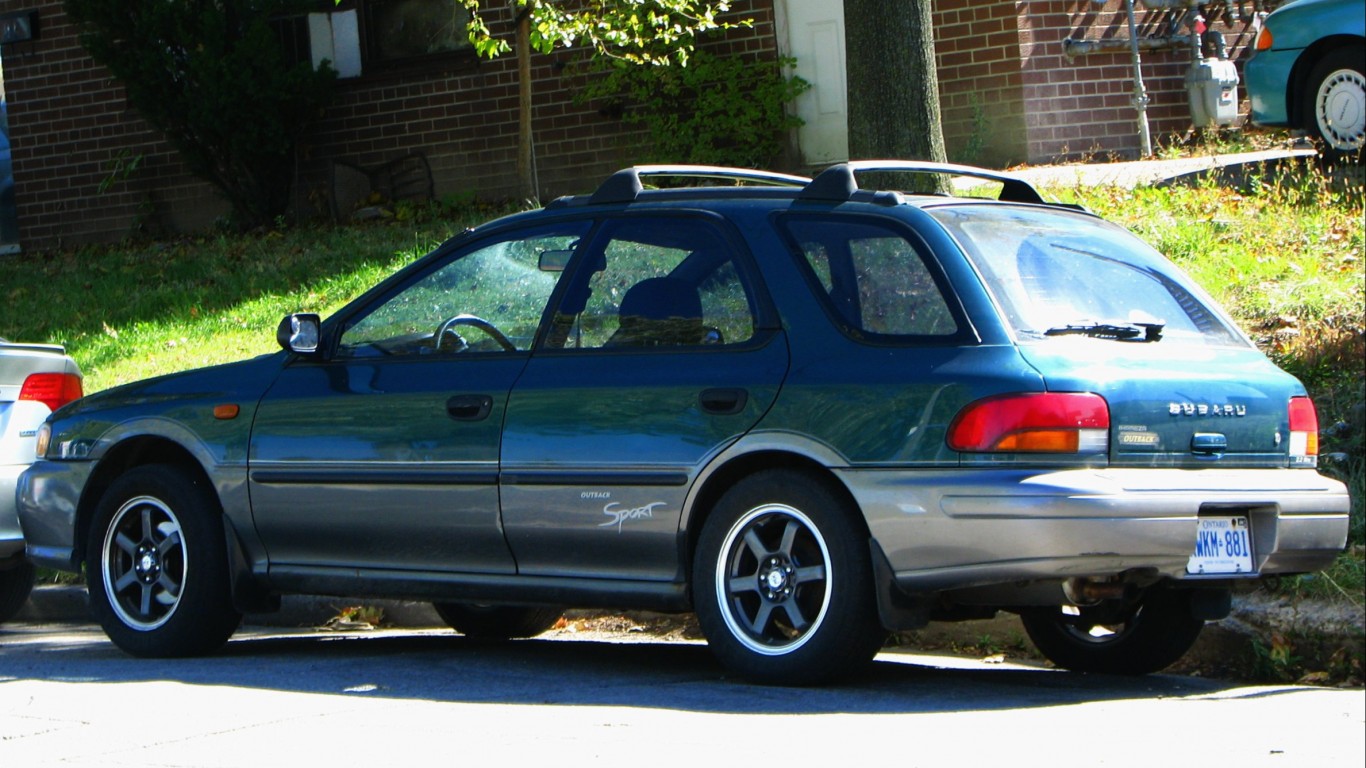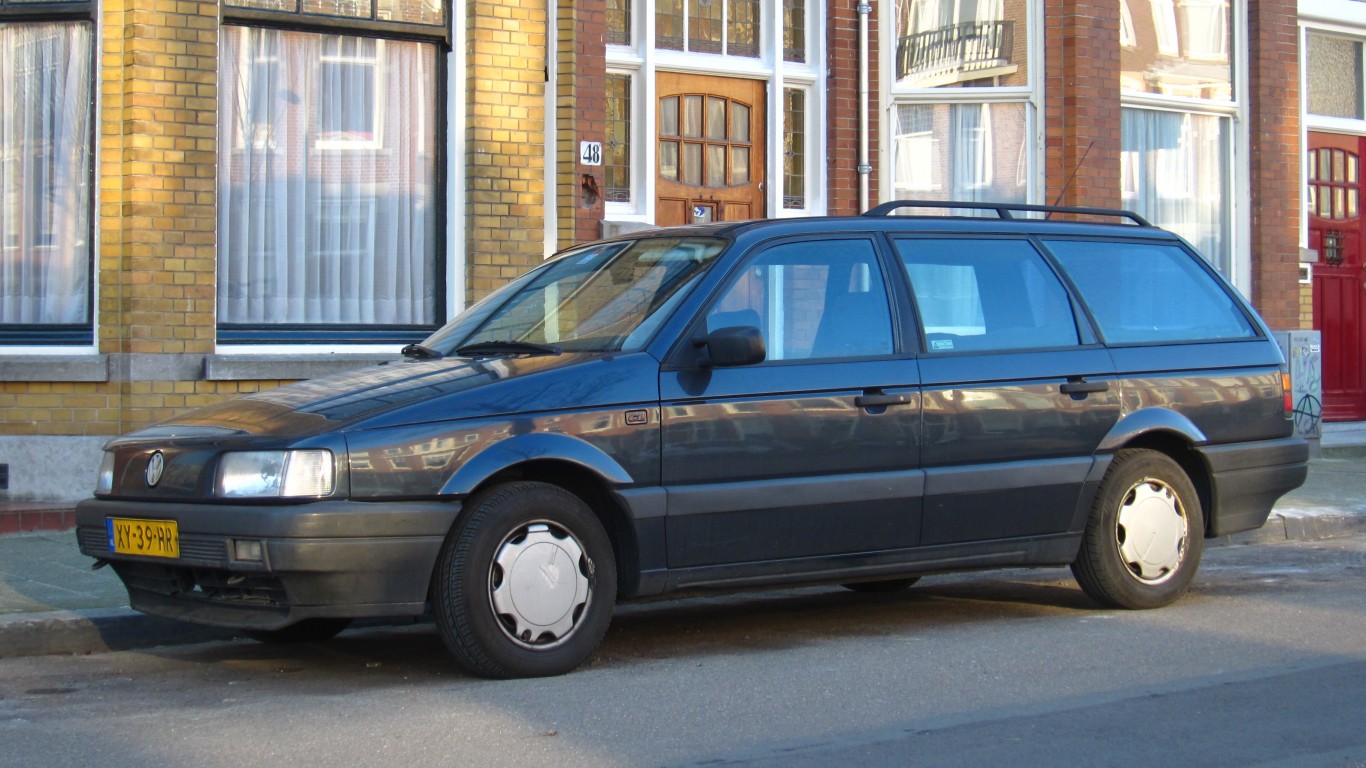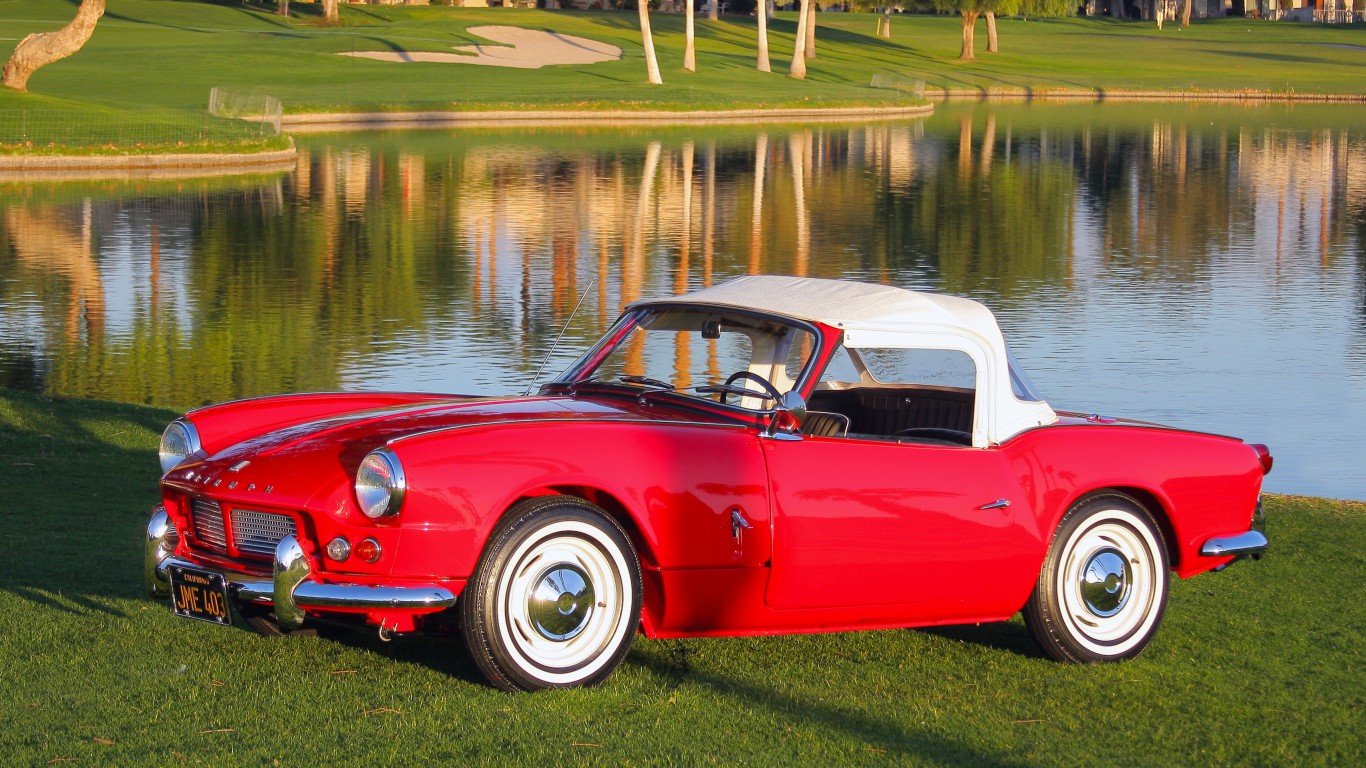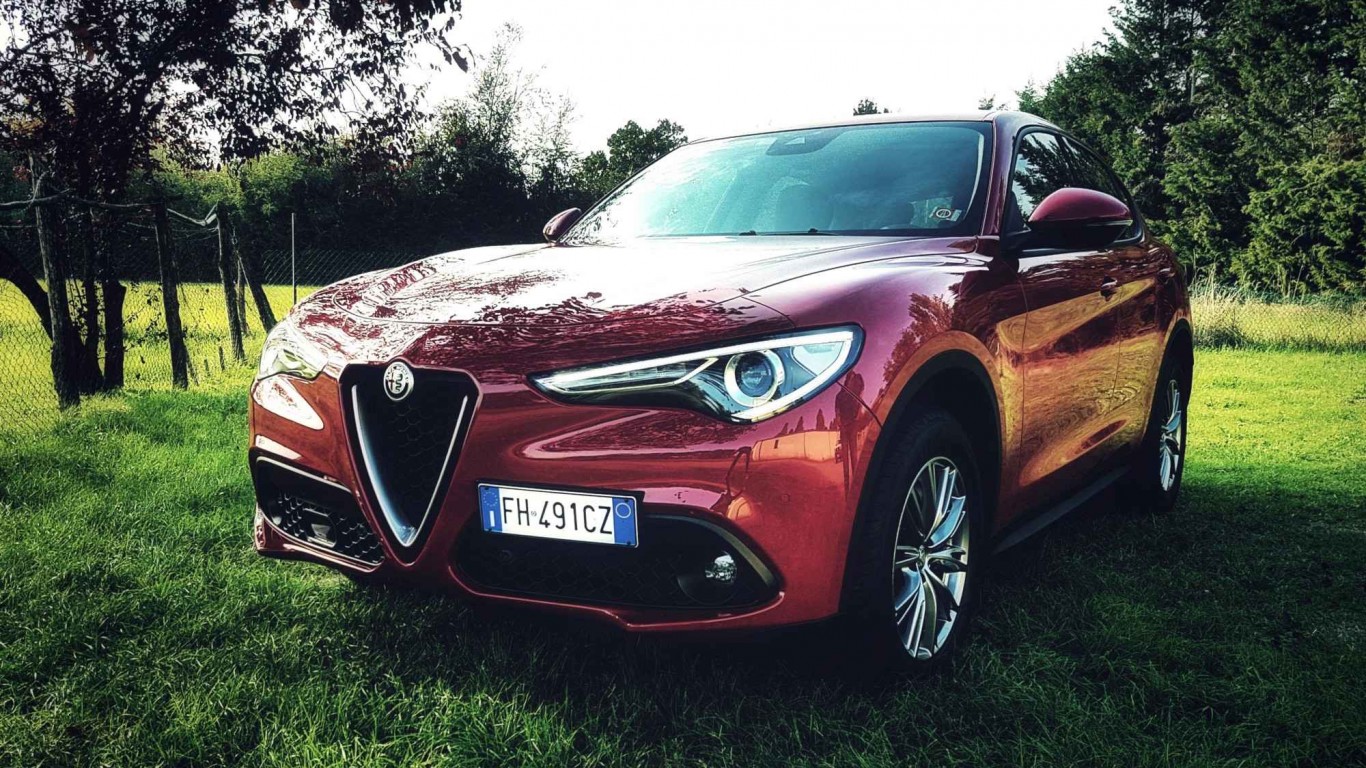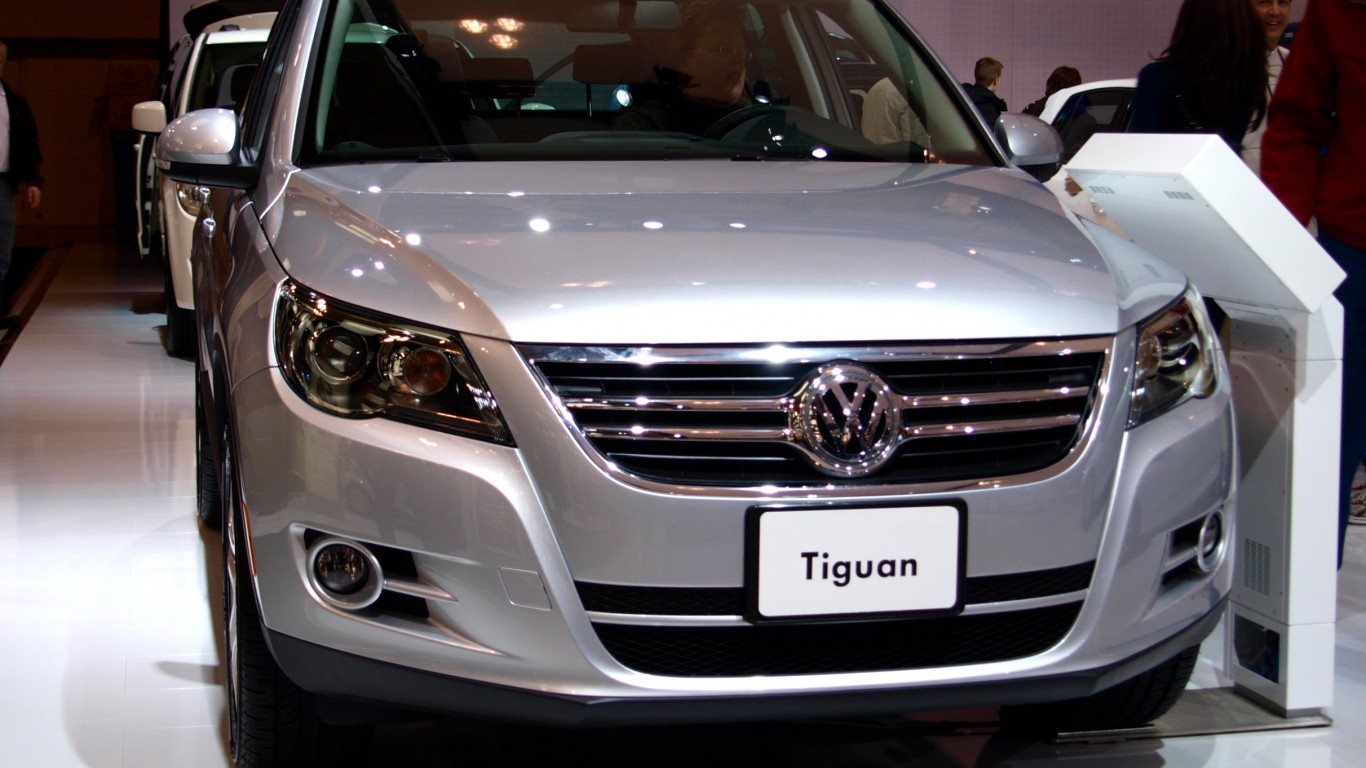
In 1955, the celebrated modernist poet Marianne Moore was approached by the Ford Motor Company for help in coming up with a name for a new car line the company was developing. Her suggestions included Intelligent Bullet, Ford Fabergé, Anticipator, Astranaut, Pastelogram, Mongoose Civique, and Utopian Turtletop.
Perhaps not surprisingly, none of her proposals found favor with Ford, and the company ended up calling the new car the Edsel, after founder Henry Ford’s son Edsel B. Ford — with individual models bearing such lackluster names as Corsair, Pacer, and Ranger. The Edsel lasted only three years and was one of the biggest flops in American business history. (Here are some of today’s most and least dependable car brands.)
Car companies themselves are sometimes named for their founders (not just Henry Ford, but Louis Chevrolet, Enzo Ferrari, and Soichiro Honda, among others). Other times, they are given monikers that are meant to be evocative (Hyundai borrows its name from a Korean word meaning “modernity;” Volkswagen translates to “peoples’ car”), and on occasion, automakers bear names that are basically generic (General Motors; BMW — standing for Bayerische Motoren Werke, or Bavarian Motor Works).
When it comes to individual models produced by these companies, however, imagination sometimes runs riot. Cars get named for animals, geographical locations, ships and airplanes, groups of people, even fighting bulls.
Of course, some manufacturers play it safe and just use boring old letters and/or numbers. If you drive a Volvo, it might be a PV51, an XC90, or a C202. That new Mercedes of yours could be a GLC or an SL — unless you plunked down $175,000 or so for a Maybach. (In contrast, check these amazing cars from bygone times.)
24/7 Wall St. made a list of some of the most iconic car models that have actual names, then researched the origins of those names through a variety of sources, including Road and Track, Can and Driver, Motor Trend, Motor Authority, Autoweek, Between the Axles, GM Authority, Car Name Emblem, The News Wheel, and Cherokee Forum, as well as numerous car company and dealership websites.
Note that the years the cars were introduced in the U.S. refer to the year of sale, not the model year — i.e. car companies typically introduce each year’s model in the previous year.
Click here to see how 30 iconic car models got their names
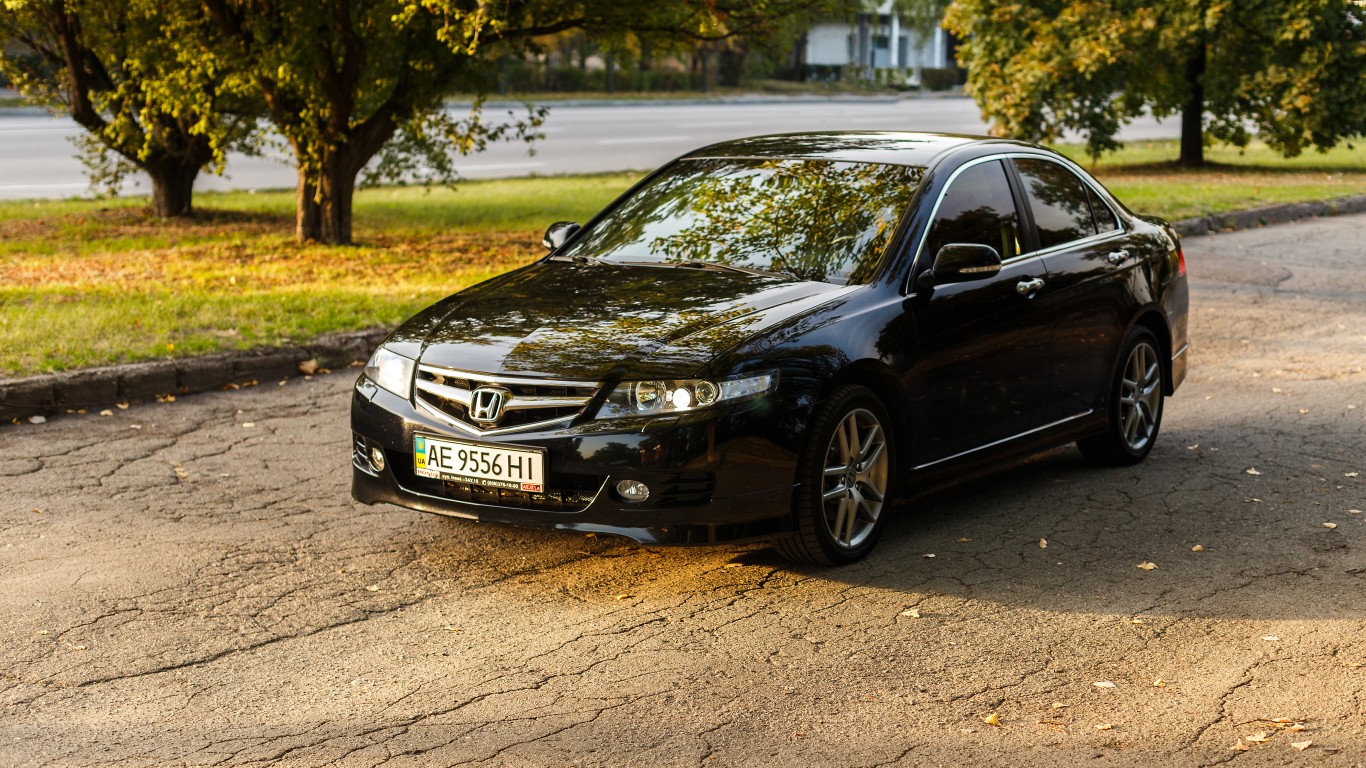
Accord
> Manufacturer: Honda
> First model year sold in the U.S.: 1977
An accord is an official agreement between people or groups. Honda has used the name for several different vehicles. The company says that it chose the name as a reflection of its “desire for accord and harmony between people, society and the automobile.”
[in-text-ad]
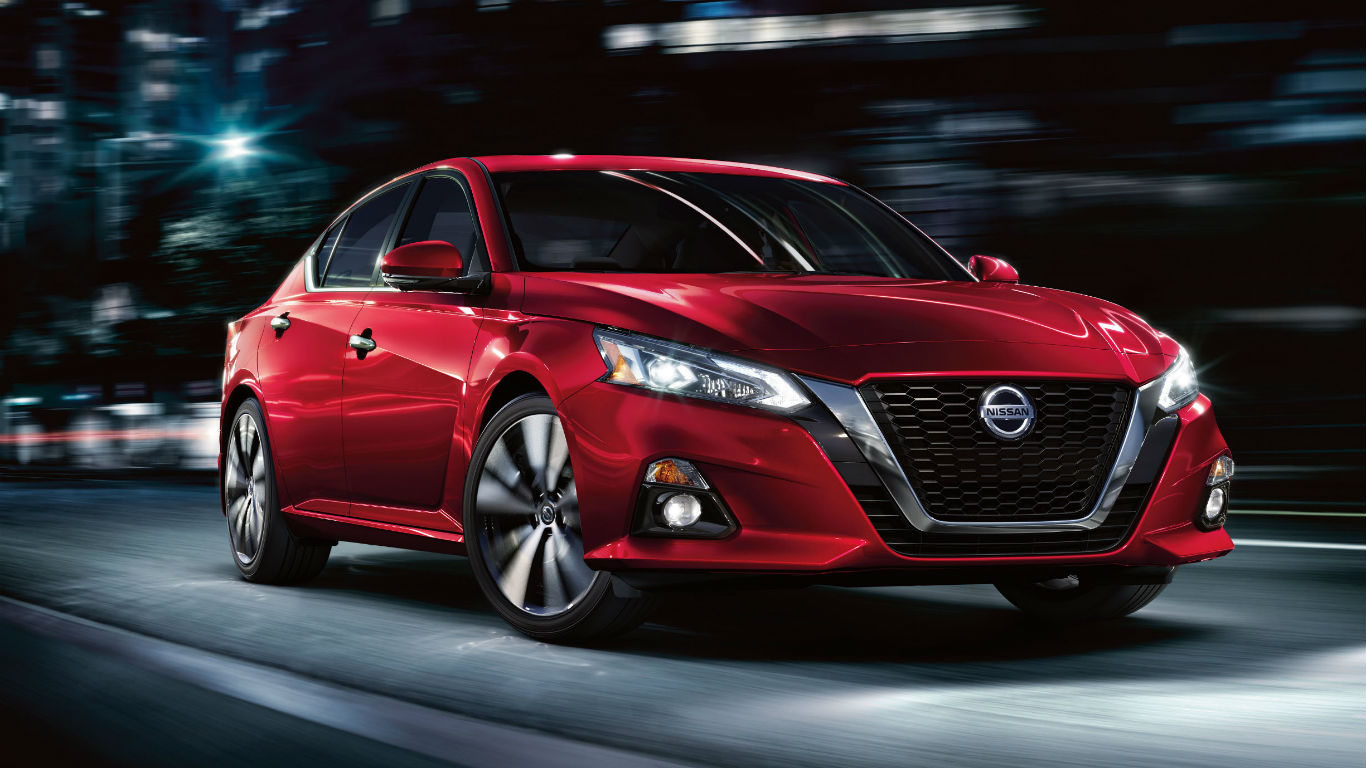
Altima
> Manufacturer: Nissan
> First model year sold in the U.S.: 1993
Midway between the Sentra and the Maxima, the Altima was given a made-up name based on “ultima” (Latin for “ultimate”), with the “alt” probably added to suggest altitude — as in exalted position.

Avalon
> Manufacturer: Toyota
> First model year sold in the U.S.: 1995
Avalon is a mythical island featured in the tales of King Arthur and the Round Table. Toyota says it chose the name because it suggests “images of comfort, spaciousness and sophistication.”
Beetle
> Manufacturer: Volkswagen
> First model year sold in the U.S.: 1949
“Beetle” was not an official model name. The original car — produced at the request of Adolf Hitler in 1938 — acquired the nickname Käfer (“beetle” in German) because of its shape. (One of its designers was Ferdinand Porsche, later renowned for a rather sportier car of his own.)
As it became known in the English-speaking world, the terms Beetle and Bug became popular. The original Beetle went out of production in 2003, after more than 21 million had been manufactured. It was revived in updated form between 1997 and 2010 and again between 2011 and 2019.
[in-text-ad-2]

Camaro
> Manufacturer: Chevrolet
> First model year sold in the U.S.: 1967
The Camaro was developed by Chevrolet as competition for Ford’s Mustang. At first, it was going to be called the Panther, but General Motors executives decided that the name was too aggressive. Because Chevy liked “C” names like Cavalier and Corvette, execs considered calling the vehicle the Chaparral.
Shortly before production was to begin, though, GM executive Pete Estes dubbed it the Camaro, initially claiming that the word was a French slang term for “friend.” In fact, he seems to have just made it up, later joking that a camaro is “a vicious animal that eats Mustangs.”
Camry
> Manufacturer: Toyota
> First model year sold in the U.S.: 1983
Toyota likes names that refer to crowns. The company has a model called the Crown, in fact, as well as ones called the Corona and the Corolla, both being Latin synonyms for “crown.” Camry? It’s an anglicized version of the Japanese word “kanmuri,” which means … crown.
[in-text-ad]
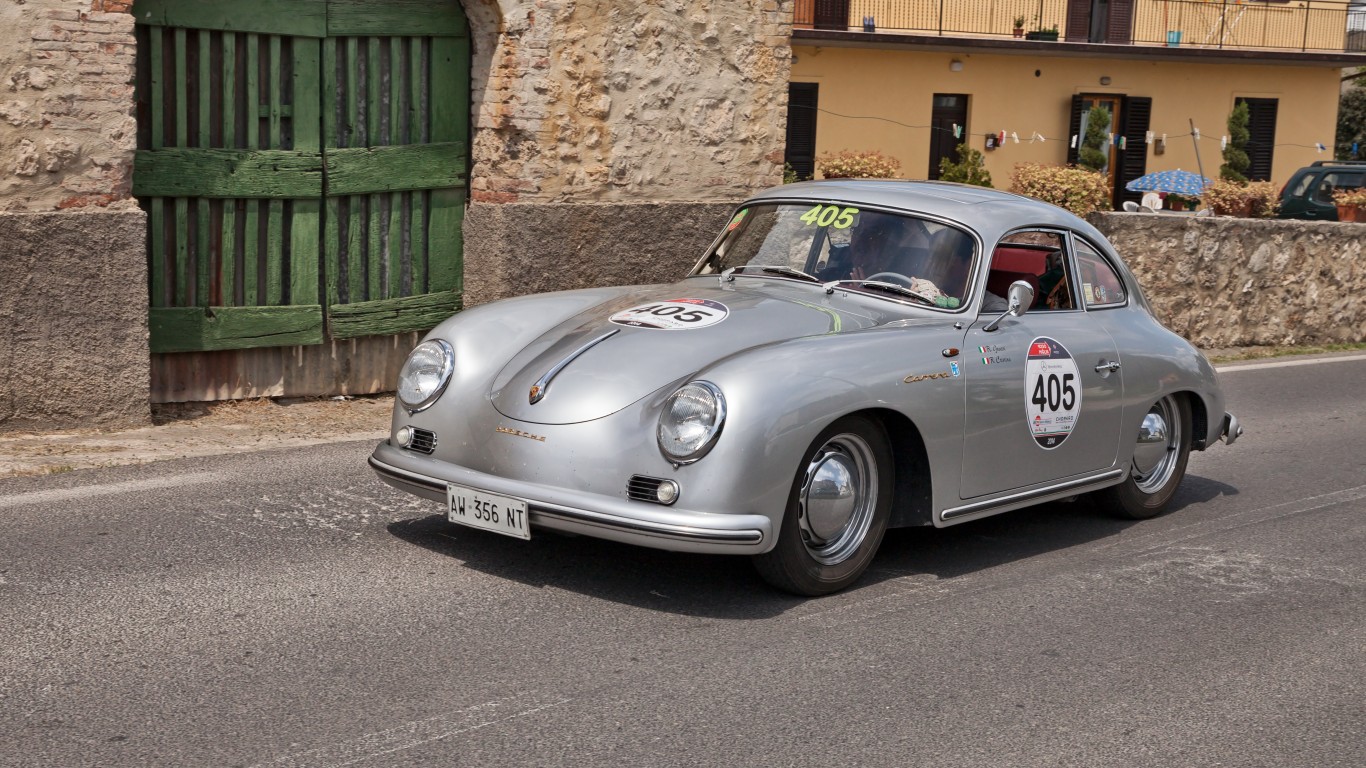
Carrera
> Manufacturer: Porsche
> First model year sold in the U.S.: 1956 (?)
“Carrera” is the Spanish word for “race” and has been applied to a number of Porsche models over the years. Originally, it was used as a tribute to the company’s successes in the original Carrera Panamericana, or Panamerican Race, a famously dangerous road race running through Mexico between the Guatemalan border and the U.S. frontier.

Cherokee
> Manufacturer: Jeep
> First model year sold in the U.S.: 1984
According to one source, a Jeep executive once explained that the company was looking for a name for a two-door sport version of its Grand Wagoneer and somebody suggested Cherokee because the tribe was known for its strength and civility — two qualities Jeep wanted to convey for its vehicle.
Another story, however, credits Robert Beverly Evans, chairman of American Motors, once Jeep’s parent company, with naming it after a property he owned — Cherokee Plantation in South Carolina. The name might not be around much longer, in any case. Representatives of the Cherokee Nation have asked Jeep to discontinue its use, and the company has indicated that it is open to the possibility.
Corvette
> Manufacturer: Chevrolet
> First model year sold in the U.S.: 1953
A corvette is a small warship. The term was first used by the French navy in the late 1600s (it comes from the Dutch word “corf,” meaning “basket”), but persisted into modern times, and the corvettes used by the Allies during World War II were known for their speed.
One Myron E. Scott, who worked in Chevy’s public relations department, suggested that the word was easy to pronounce and remember and that it might appeal to American men who had served during the war — which had ended only eight years before the first Corvette was released.
[in-text-ad-2]
Cougar
> Manufacturer: Mercury
> First model year sold in the U.S.: 1967
The best-selling Mercury model ever, the Cougar was originally developed as Mercury’s answer to the Ford Mustang. There’s no record of exactly how the name was chosen, but the company seemed to like big cat-related names, perhaps because they implied speed and agility, also producing a Bobcat and a Lynx.

Countach
> Manufacturer: Lamborghini
> First model year sold in the U.S.: 1985 (officially)
The logo of this luxury sports car company (now owned by Volkswagen through its Audi division) shows a charging bull, and many of its models are named after famous fighting bulls — like Veneno, Aventador, and Huracán. One exception is the Countach, a name borrowed from a vaguely offensive Piedmontese dialect expression literally meaning “plague” but used colloquially to express something like “Wow.” The word was reportedly uttered by someone (a security guard or a corporate executive, depending on which version of the story you believe) upon first seeing the car.
Though the first Countach to meet U.S. safety and emissions standards didn’t appear here until 1985, many Americans bought the cars on the “grey market” from the 1970s onward and modified them to meet U.S. regulations.
[in-text-ad]
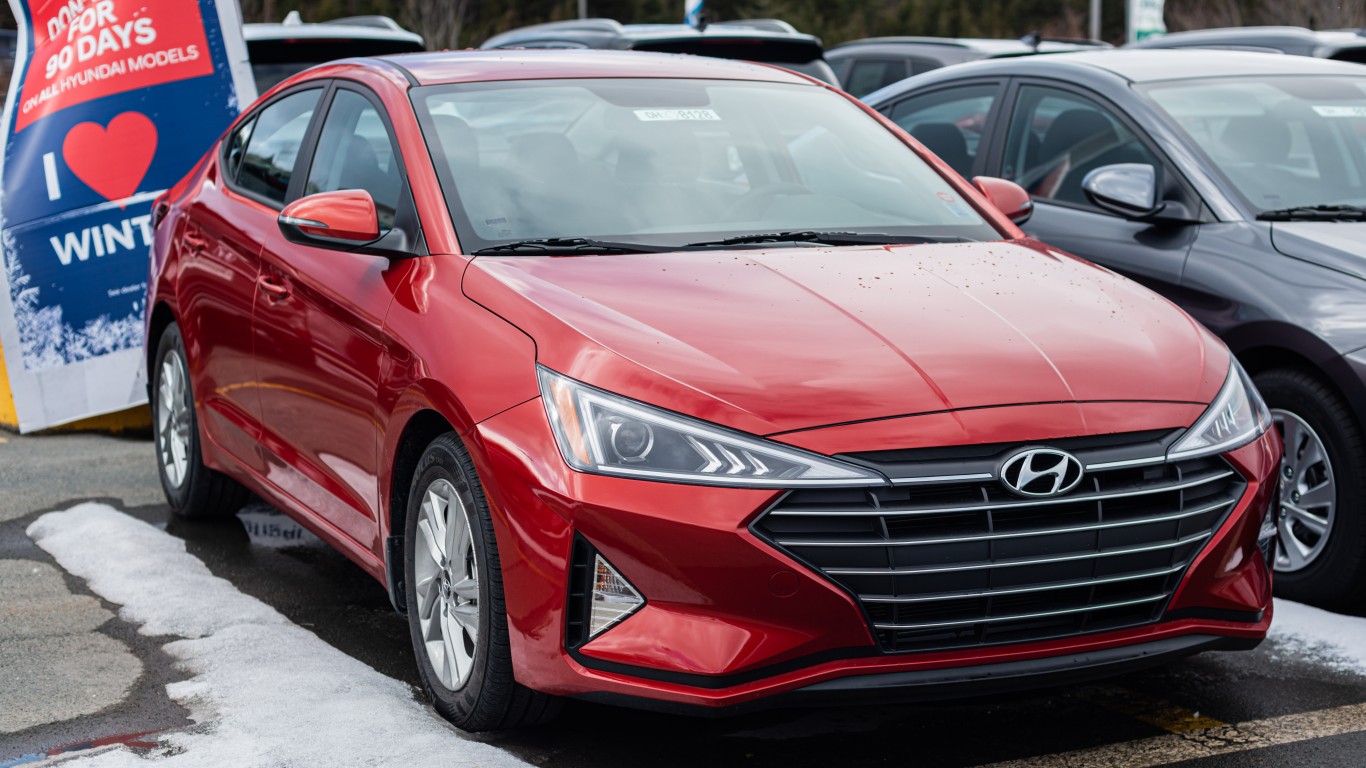
Elantra
> Manufacturer: Hyundai
> First model year sold in the U.S.: 1990
According to one Hyundai source, “The name ‘Elantra’ comes from the word ‘elation.’ Fittingly, the model lifts one’s spirits when driven.” However, various versions of the vehicle in various markets have been badged as Lantra.
Hyundai has had a hard time with the name Elantra, in any case. Mitsubishi thought it was too close to its Elante, the trim level on its Magna in Australia, and Lotus complained that it sounded too much like its Elan. Neither is still in production, however, so Hyundai continues to use the name.
Escalade
> Manufacturer: Cadillac
> First model year sold in the U.S.: 1999
Cadillacs used to have names like Fleetwood (after the Pennsylvania town of that name, home of the original body manufacturer for the brand) or Eldorado (literally “the golden one,” a name suggested by a company secretary for a car released in honor of Cadillac’s 50th — golden — anniversary). Cadillac itself was named after the founder of Detroit, Frenchman Antoine de la Mothe Cadillac (a commune in southwestern France), so it’s perhaps appropriate that this model has a French name.
“Escalade” means “climbing” and is an old military term meaning the scaling of walls with ladders in warfare — so the connection to an oversized luxury SUV isn’t clear.
Firebird
> Manufacturer: Pontiac
> First model year sold in the U.S.: 1967
Pontiac’s Firebird was its attempt to compete with other so-called pony cars (sporty compact coupés or convertibles) like the Ford Mustang and the Mercury Cougar. Pontiac itself was named for the car-manufacturing Michigan city of that name, which was in turn named after an 18th-century Odawa (or Ottawa) Indian chief — and some sources suggest that the Firebird was a fantastical creature from Odawa mythology.
Trouble is, the Odawa bird is the Thunderbird — a name that already belonged to Ford by 1967 — and the Firebird, similar to the Phoenix, is actually a figure in Russian myths. The name was originally used by General Motors for experimental gas-turbine cars, and the first one had a streamlined look that may have suggested a fiery bird hurtling through the air.
[in-text-ad-2]
Ghibli
> Manufacturer: Maserati
> First model year sold in the U.S.: 1967
The Ghibli name (pronounced “GHEEB-lee”) has been applied to three different Maseratis since its debut in the mid-1960s. In choosing the name, Maserati anticipated VW’s slightly later practice of christening cars after various air currents and borrowed the Libyan Arabic name of a hot, dry desert wind.
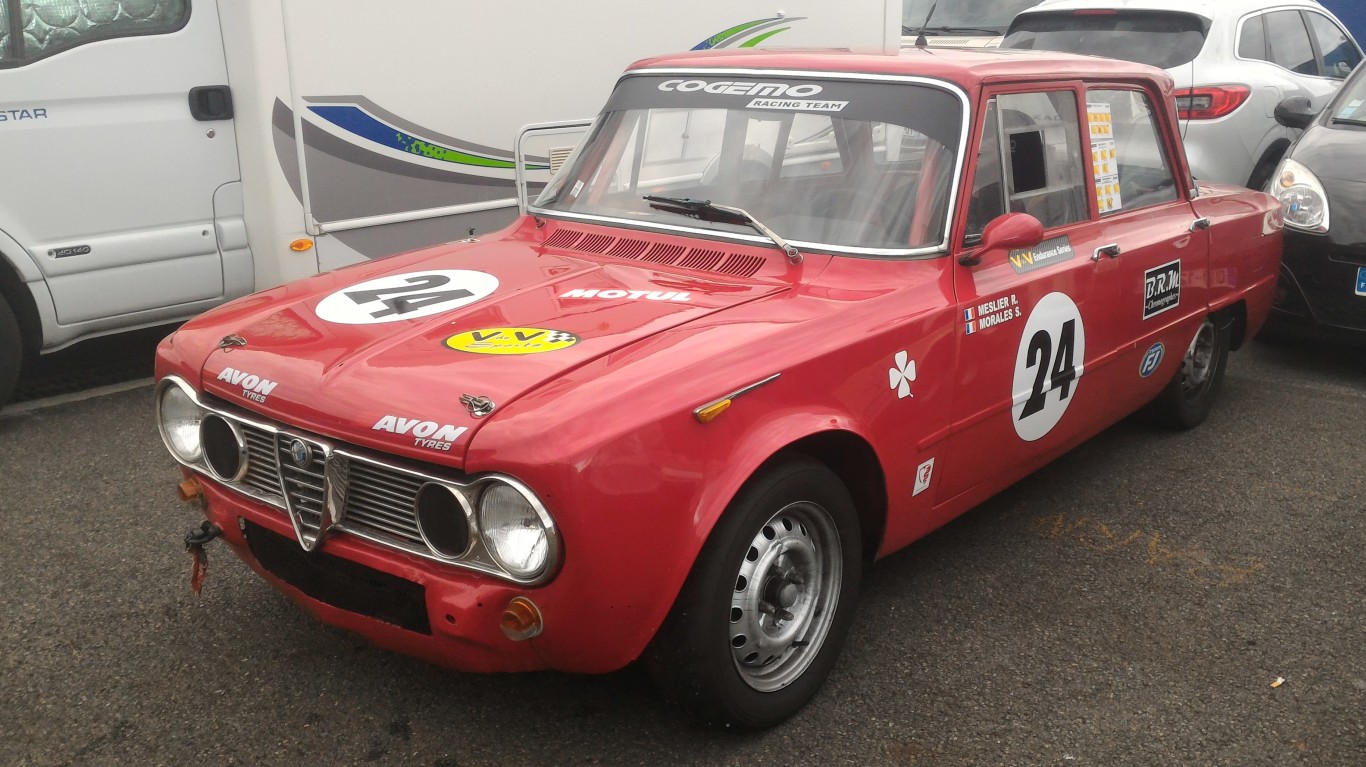
Giulia
> Manufacturer: Alfa Romeo
> First model year sold in the U.S.: 2016
Alfa Romeo (now owned by Fiat Chrysler) has made a car called the Giulietta — Italian for Juliet (get it? Romeo and Giuletta?) — on and off since 1954 (and still does). The Giulia (pronounced JOOL-ya) was introduced to the U.S. market in 2016 as a part of Alfa’s return to American shores after more than 20 years as a larger, more powerful version of the Giuletta. It apparently made sense to the company to give the car a more grown-up version of the name.
[in-text-ad]
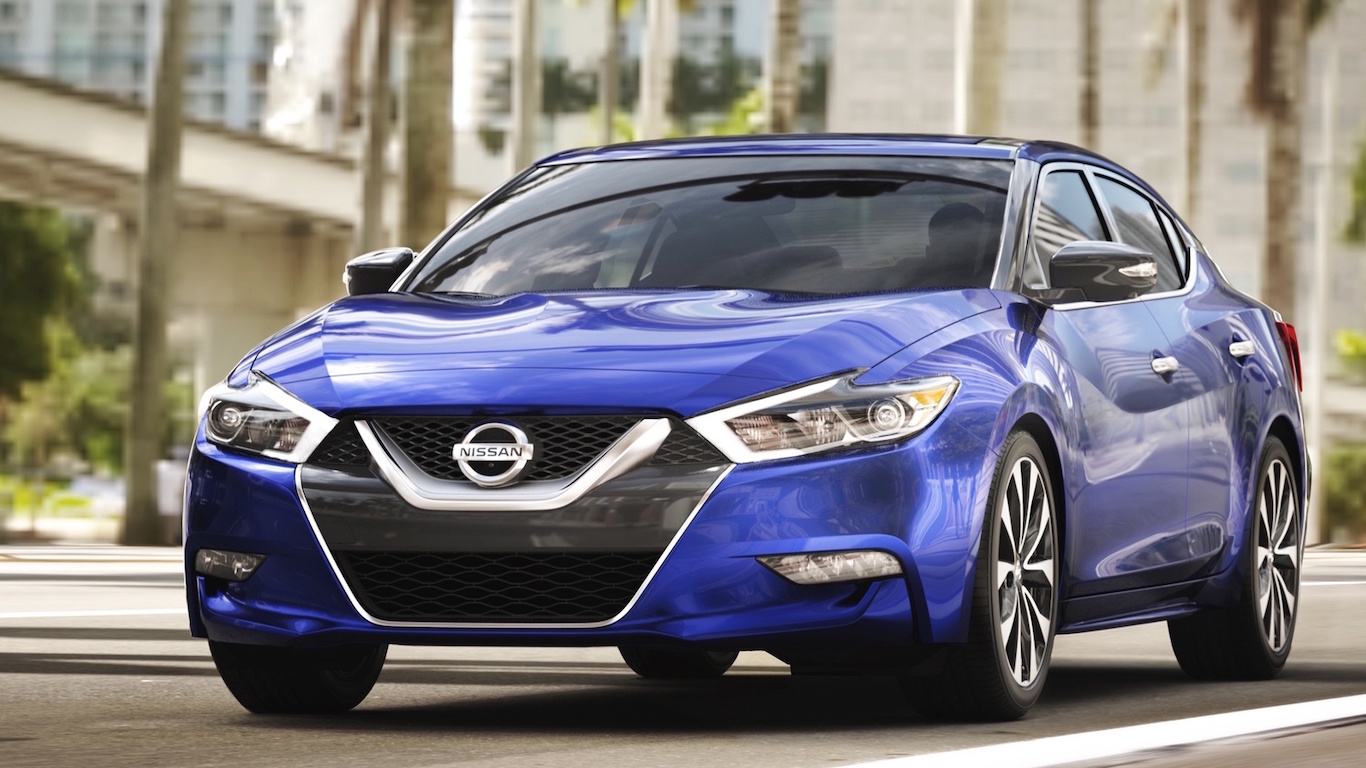
Maxima
> Manufacturer: Nissan
> First model year sold in the U.S.: 1982
Automakers like to give their cars names that suggest speed, durability, or — as in this case — simply power. “Maxima” is Latin for “the most,” and the term was first applied to a six-cylinder version of the company’s popular Bluebird in Japan and later used for a mid-size car sold mostly in the U.S.
Mustang
> Manufacturer: Ford
> First model year sold in the U.S.: 1964
The original pony car has a galloping wild horse as its logo — but it wasn’t named for a horse, at least not directly. An early prototype for the vehicle was called the Cougar, which later, of course, was adopted as the name of Mercury’s Mustang counterpart. Other names for the car proposed by Ford executives included Allegro, Aventura, and even Thunderbird.
While one theory credits a horse-breeding Ford research manager with the name, the most credible origin story involves one of the car’s designers, John Najjar. A fan of World War II history, he’d always been impressed by the ace American fighting plane of the period — the P-51 Mustang (itself presumably named for the horse), and thought the name conveyed power and American authority. Ford brass didn’t like the idea — until Najjar toned down the wartime reference and suggested that the car, like wild mustangs, would be seen as free and wide-ranging.
Optima
> Manufacturer: Kia
> First model year sold in the U.S.: 2001
Just as Nissan chose the name Maxima (“the most” in Latin) for one of its cars, Kia went for Optima (Latin for “the best”). As of the 2021 model year, however, the car has been renamed to the K5 — the more anonymous moniker that it bears in its homeland of South Korea.
[in-text-ad-2]
Outback
> Manufacturer: Subaru
> First model year sold in the U.S.: 1997
The Outback was originally the Legacy. When a version adapted for off-road driving, with higher suspension and protective cladding, was introduced in Australia in 1996, it was dubbed the Legacy Outback, in reference to Australia’s rugged backcountry. The name was eventually applied to the model elsewhere.
Passat
> Manufacturer: Volkswagen
> First model year sold in the U.S.: 1990 (under the Passat name)
VW obviously likes to keep things moving, as a number of its models are named after currents — mostly, but not entirely, wind currents. The Passat draws its name from “Passatwind” (“trade wind”), the Jetta from “Jet-Stream” (“jet stream”), and the Golf not from the game of the same name but from “Golfstrom” (“gulf stream”). Two other models, lesser known in the U.S., also reference winds, both of which blow in parts of the Mediterranean — the Bora and the Scirocco. Early versions of the Passat were sold in the U.S. under other names, including the Dasher and the Quantum.
[in-text-ad]

PT Cruiser
> Manufacturer: Chrysler
> First model year sold in the U.S.: 2001
This retro-looking love-it-or-hate-it crossover SUV, produced only in the first decade of the 21st century, borrowed part of its name from a concept car, the Pronto Cruizer, which debuted at the 1999 Geneva Auto Show under the aegis of Chrysler’s sister brand, Plymouth. Chrysler inherited the PT Cruiser because the Plymouth division was being phased out. One source says that the “PT” stands for “Plymouth Truck” (though it obviously isn’t a truck), while another claims that it’s short for “Personal Transport.”
Roadmaster
> Manufacturer: Buick
> First model year sold in the U.S.: 1936
This classic Buick, sold between 1936 and 1958 and again, in altered form, from 1990 to 1996, earned its name, it’s said, because of the way it commanded the road. To emphasize substantial improvements over its 1935 models, Buick added evocative names to its cars for the 1936 model year — the Special, the Super, the Century, and the Limited. When it came to this then-new entry into the field, according to a sales brochure of the period, “It literally named itself the first time a test model leveled out on the open highway.”
S, 3, X, and Y
> Manufacturer: Tesla
> First model year sold in the U.S.: 2012-2020
Tesla founder Elon Musk is not exactly known for his subtlety or his conventional approach to naming (he called his son X Æ A-12). In coming up with model designations for his line of groundbreaking electric vehicles, then, it might have seemed strange that he chose a seemingly random collection of letters and a number. But he had a plan in mind: When strung together, they were supposed to spell “SEXY.” Ford, however, had already registered “Model E” for an electric car of its own, so he subbed in a 3.
[in-text-ad-2]
Spitfire
> Manufacturer: Triumph
> First model year sold in the U.S.: 1963
This sporty little rear-wheel-drive English convertible, produced between 1962 and 1980, was called the Bomb in its development stages. It ended up with a name that related to warfare in a different way: Just as Ford’s Mustang was named for the P-51 Mustang fighter plane, this Triumph was named after the Royal Air Force’s Supermarine Spitfire, the U.K.’s own high-performance fighter. Ironically, the headquarters of the car’s original producer, the Standard Motor Company, were in Coventry — a city bombed by the Luftwaffe during the Battle of Britain, in which the Spitfire performed heroically.
Stelvio
> Manufacturer: Alfa Romeo
> First model year sold in the U.S.: 2017
Alfa Romeo’s crossover SUV was named for the highest mountain pass in Italy, the tortuous Stelvio, and was presumably applied to the vehicle to suggest the ease with which it could negotiate the road’s 48 switchbacks. Stelvio can also refer to the country’s largest national park and to an Alpine cheese made in the Stelvio Valley.
[in-text-ad]
Testarossa
> Manufacturer: Ferrari
> First model year sold in the U.S.: 1985
The original Testa Rossa — two words, meaning “red head” — was a Ferrari race car, produced between 1957 and 1961. It won numerous championships over its brief lifespan, including the 24 Hours of Le Mans, the 12 Hours of Sebring, and the Targa Florio. Its name stems from the fact that its cam covers were painted bright red. When the company began producing a 12-cylinder mid-engine replacement for its Berlinetta Boxer in 1984, it christened it after its illustrious predecessor.
Thunderbird
> Manufacturer: Ford
> First model year sold in the U.S.: 1955
More than 5,000 names were suggested by various people for this famed car, produced between 1954 and 1997 in various forms and again between 2001 and 2005. It might have ended up being called the Beaver, the Eagle, the Tropicale, the Runabout, the Detroiter, El Tigre, or even the Hep Cat. One story holds that it got the name it ended up with from the chairman of Ford at the time. A member of the Thunderbird Country Club in Rancho Mirage, California, he asked for and was granted permission to use the club’s name for the vehicle.
The truth is that the T-Bird (as it was popularly known) got its name from a Ford stylist, Alden Giberson, who won a $250 prize for his efforts. Giberson had lived in New Mexico and was inspired by a coffee mug he used, emblazoned with an image of the Thunderbird, a creature from Native American mythology
Tiguan
> Manufacturer: Volkswagen
> First model year sold in the U.S.: 2009
A smaller crossover SUV counterpart to VW’s Touareg (itself named for the nomadic Tuareg, a Saharan desert people), the Tiguan earned its name by way of a contest held by the German automotive publication Auto Bild. Names such as Samun, Nanmuk, and Namib were suggested, but the winner was this portmanteau of two German words — Tiger (“tiger”) and Leguan (“Iguana”) — presumably meant to suggest the car’s power and mobility.
[in-text-ad-2]
Viper
> Manufacturer: Dodge
> First model year sold in the U.S.: 1992
Before it was discontinued in 2017, the Viper was named one of the “Most American Vehicles” by Cars.com, meaning that at least 75% of its parts were U.S.-made. It was reportedly dubbed the Viper because it was strongly influenced by Ford’s Cobra.
Are You Ahead, or Behind on Retirement? (sponsor)
If you’re one of the over 4 Million Americans set to retire this year, you may want to pay attention.
Finding a financial advisor who puts your interest first can be the difference between a rich retirement and barely getting by, and today it’s easier than ever. SmartAsset’s free tool matches you with up to three fiduciary financial advisors that serve your area in minutes. Each advisor has been carefully vetted, and must act in your best interests. Start your search now.
Don’t waste another minute; get started right here and help your retirement dreams become a retirement reality.
Thank you for reading! Have some feedback for us?
Contact the 24/7 Wall St. editorial team.
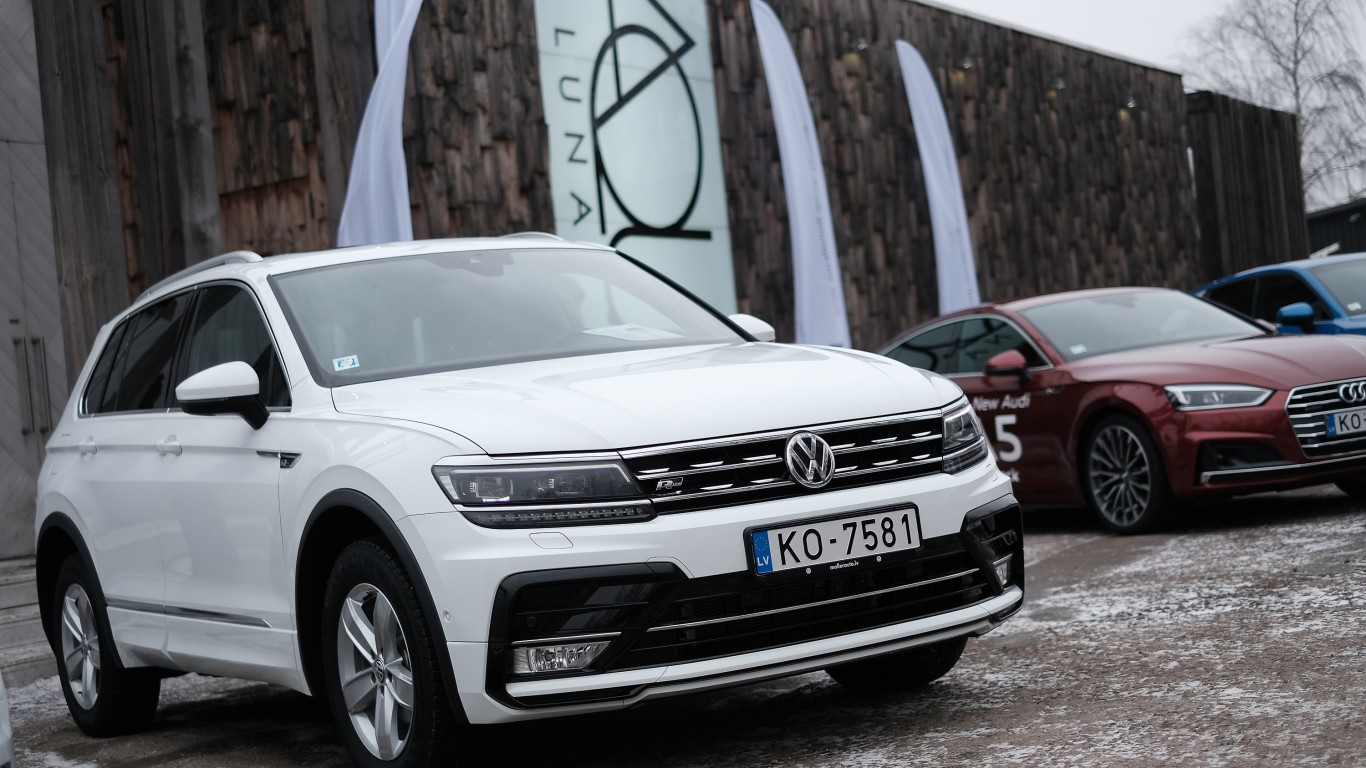 24/7 Wall St.
24/7 Wall St.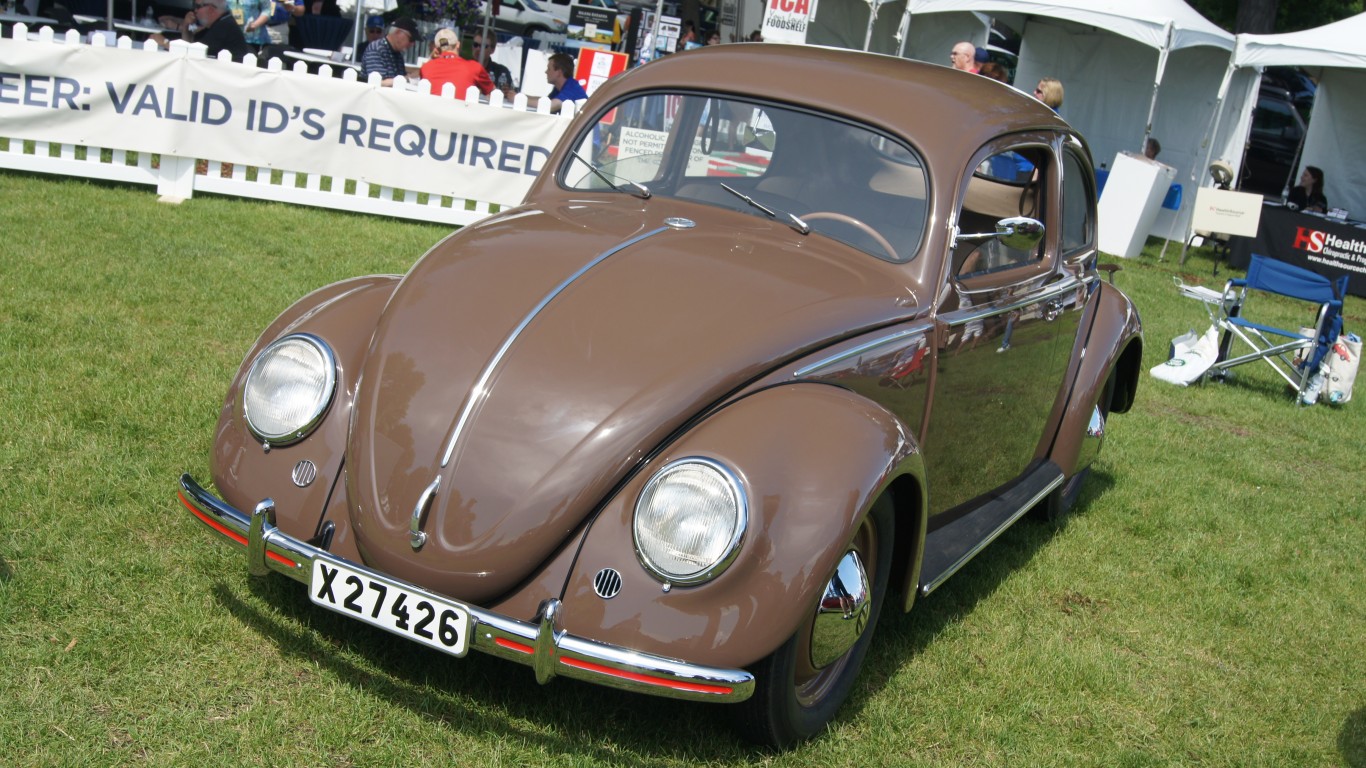
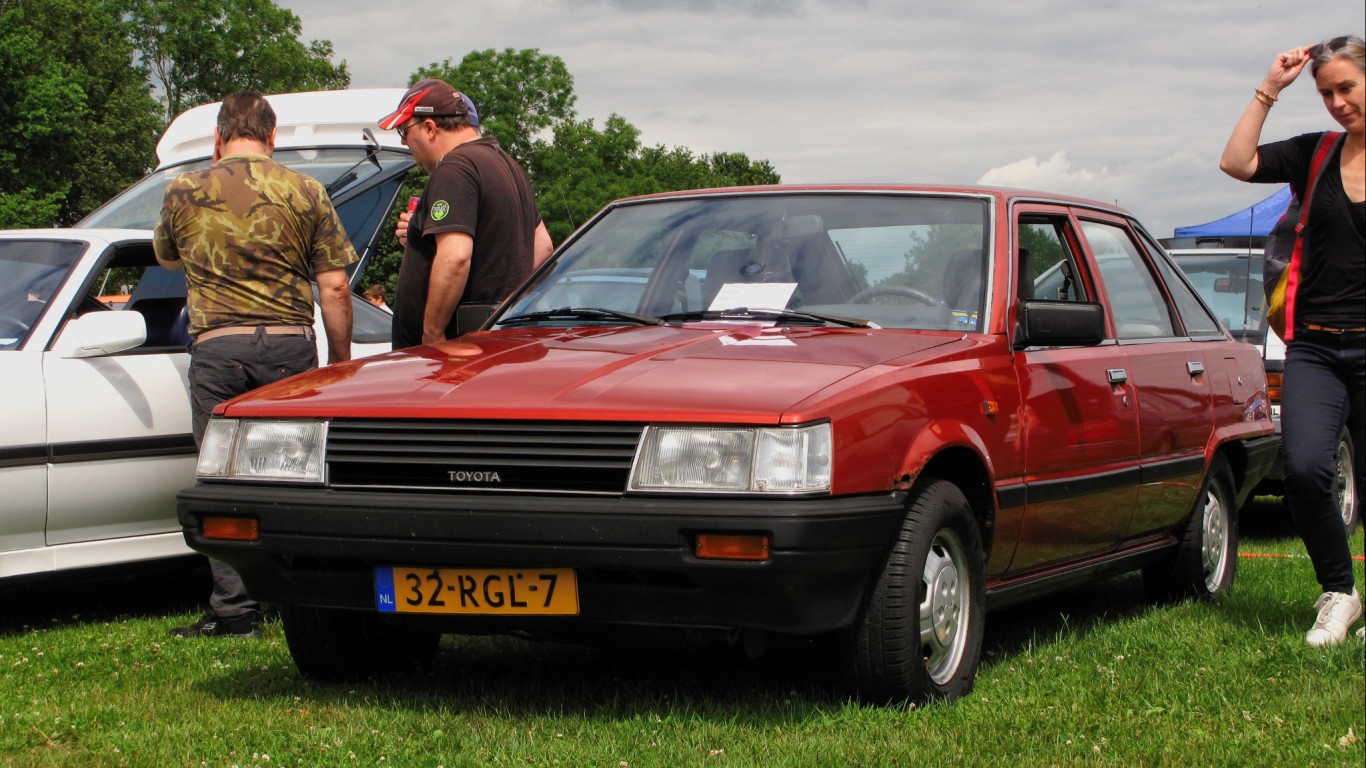
 24/7 Wall St.
24/7 Wall St.
